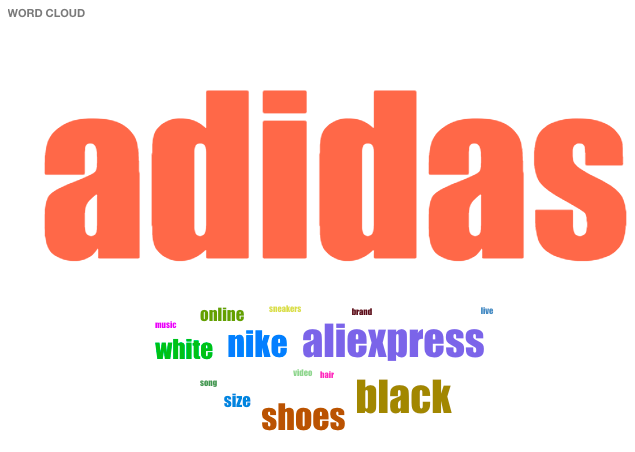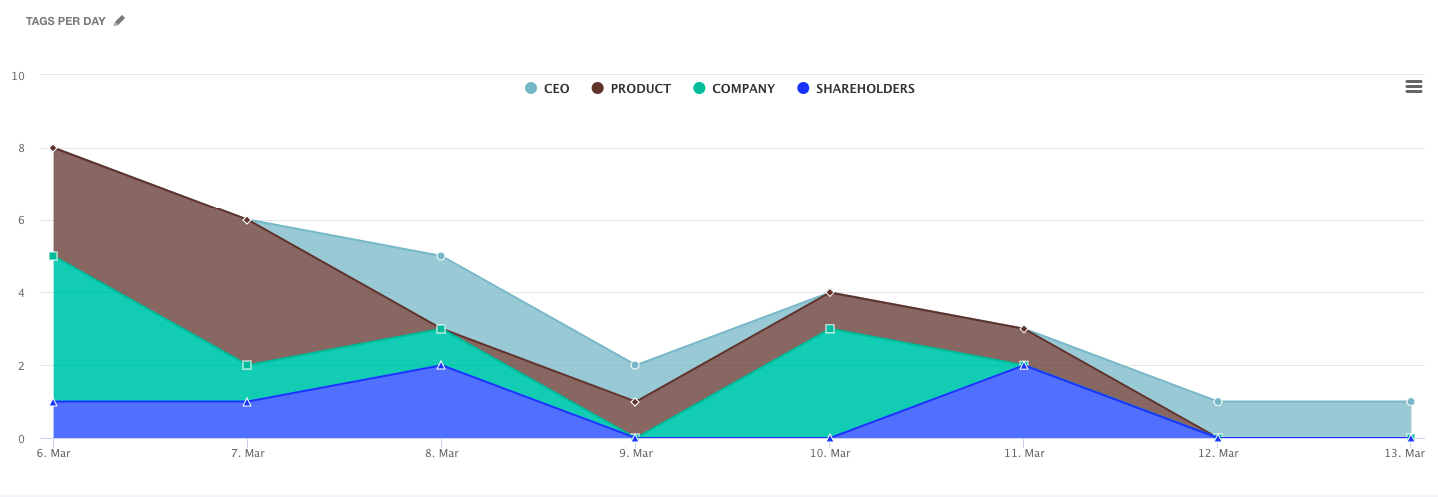 I am all about data—specifically communications data.
I am all about data—specifically communications data.
I know this isn’t typically the first thing that comes to mind when I tell people I’m a communicator.
But, because Mediatoolkit is in the business of providing relevant data to communicators, that’s an issue for me.
People perceive us as creative storytellers and content creators, while data and numbers are left to the techies.
I’d argue we are a part of the problem.
I’ve not only heard jokes told about communicators being lousy with numbers, but have made a fair share of them myself.
But perhaps that’s a false assumption.
Last time I checked, most PR classes didn’t teach statistics or analytics.
And I know I chose a career in communications because I felt more comfortable with words than numbers.
But the times, they are a-changin’—and PR is, too.
Fake News…Or is it?
Data-backed decision-making is among the most used buzzword for pretty much every marketing technology tool available.
It’s also the subject of plenty of jokes.
The fact that people tend to put their trust in numbers doesn’t make this any less true.
Copywriters use supporting statistics to persuade consumers to trust them.
Communicators need to apply this same logic to their clients and executives.
I’ve heard dozens of complaints regarding the lack of trust decision makers have for the communicators on their teams.
One of my favorite examples is a friend who recently acquired a new client.
To demonstrate campaign success, she did the usual: collected company mentions, analyzed them, identified topics of interest, and made a list of relevant KPI’s in communications strategy.
The meeting went great, and the client was impressed with the plan.
But then she stated the main cause of previous negative publicity was, gulp, the client himself.
Long story short, the client’s somewhat erratic behavior had received plenty of negative media coverage and had a direct influence on the company’s reputation.
It was nothing too extreme, and my friend had no issue working with the client on damage control and media training.
Unfortunately, the client wouldn’t hear of it as “neither he, nor his close colleagues see a problem with his behavior,” and “it’s JUST a minority of journalists misinterpreting his word.”
Too bad this incident happened a couple of years ago.
Otherwise, he could have just screamed “fake news!” and ended the conversation right then.
Communications Data Gains You Respect
Now at this point in the negotiation, most of the communicators I know want to scream, “Hey, you’re hiring ME as a communications professional. Let me tell YOU what the problem is!”
But they don’t. And they’re the professionals.
Instead, they’ll either quit a client, try to persuade them, or find another alternative.
The biggest challenge is persuasion. And this is where communications data comes in handy.
Clients often assume communicators “work with their gut” and that it’s “all just assumptions.”
Even worse, clients see their colleagues, friends, and family as more of an expert rather than the pros they hired.
To gain more respect, you can combine communications data with your recommendations.
Here’s an example of a media analysis I recommend to everyone starting work with a new client, or reporting to an existing one.
Start with General Insight
General insight should include basic media data on the company and the industry.
This includes having a keyword cloud about the company name so you can quickly check for negative terms that may be associated with it.
Imagine being a cosmetic brand constantly mentioned alongside animal cruelty.
Not cool.
Although, there is a big likelihood a client would forget to brief you on the problem, or worse yet, be unaware of it.
In this example, we have a word cloud for ADIDAS.
Luckily, there isn’t any negative context here.
Though, there are some interesting facts.
See how shoes get a mention more often than sneakers? And how “video” is one the top keywords?

In addition to the brand itself, be sure to check the industry word cloud.
It might give you some content ideas or reveal the most active competitors.
Word cloud for “sportswear” reveals just that: you can see Nike is among the most mentioned words next to sportswear.
Adidas isn’t, but on the other hand, we did see already their footwear is more often referred to as shoes rather than sneakers, so that’s not too surprising.
 Sentiment Analysis
Sentiment Analysis
Sentiment analysis is the main indicator of something going wrong.
It could also be among indicators a client forgot to mention about a looming crisis.
In most cases, prevailing sentiment for any client is likely to be neutral.
When they see negative sentiment, it just might burst their bubble that everything is fine.

Top Sources
Sometimes a client’s brief will state they care about integrated communications and value a strong presence on Facebook, Twitter, Instagram, Youtube, and their website.
On the other hand, a top sources graph shows that while they do have a certain presence on the web and Facebook, other channels haven’t been active for a while.
There’s nothing wrong with this, of course.
And there is always the chance that focusing on a single channel will pay off.
But, it’s good to know the starting position before proceeding.
While having a client who gives you a good brief is worth its weight in gold, experience shows it’s not often the case.
Lucky for us, working in communications includes an analysis of the current state.

Categorize Mentions by Topics Using Tags
When analyzing a company, I usually tag all their mentions with topics such as CEO, Brand, and Company.
The number of tags is based solely on those topics of interest to a company.
While it is a soul-crushing, mind-numbing task, it allows me to separate mentions so I can see which topic most engages media and social networks.
Sometimes it’s the company, other times it’s the CEO, but most of the time it’s the product that’s driving conversations.

Analyze by Tags
By separating your mentions into topics, you can create a more in-depth analysis of any reputational issues your company may face.
For example, you can see how topics are behaving over time.
Any significant peaks show a media crisis or a great opportunity.

Or simply view the share of voice for each topic:

And my personal favorite, which my friend would have profited greatly from, sentiment per tags (notice the unpopularity of this CEO).

At the moment, there are more than 2,000 available communications data points in Mediatoolkit.
The idea is simple: we can’t know if you’ll find sentiment per influencer or per tag more useful.
So instead of guessing which one will suit the majority, we made it possible for our users to make any and every data combination.
Communications Data in Everyday Work
In addition to proving a client wrong, there are plenty of other ways you can thrive by using communications data.
I usually divide reports into two categories: analytical and operational.
Analytical tells us of the campaign’s success, and I insist on supporting it with (sales) data from a CRM.
On the other hand, operational data is the one that tells you what’s happening every day.
It may serve as inspiration or alert you to any issues or opportunities.
For instance, how to track the change in conversation.
A survey is the only foolproof way to check if the message sticks with the audience.
But a word cloud can offer daily insight on whether the message is being transmitted in the media.
Sentiment data alerts you about a media crisis immediately—that’s old news.
But how often do content creators analyze mentions with a positive sentiment to help them find new ideas for content?
Every company has its strengths, and those mentions with positive sentiment are usually the ones revealing them.
Data Alone Rarely Makes a Point
Data by itself rarely makes a point in communications.
Communicators analyze it and present it in a way that drives trust.
Data makes us confront our bias. And it’s a tool to confront our clients with their bias.
One thing communicators (myself included) tend to forget is the client is often unaware of their actual problems or strengths.
This is where communicators come in.
We explain what is newsworthy, what is news at all, and where have they been wrong.
No doubt it gets uncomfortable.
No one likes to hear they’re wrong, but if they’re hiring, they already know they need help.
Being a professional communicator means knowing how to diagnose the problem and convince the client that there is a problem.
All of the graphs above take a minute of time. And we have more than 2,000 of these communications data combos ready.
Tagging mentions may take more than a minute, but not nearly as much time as a failed communications strategy based on their bad brief.
That minute may be all that it takes for a communicator to either prove their point or find one.
And that minute is what will tell a client that as a communications professional, you know more about their media presence than their brief could ever tell you.